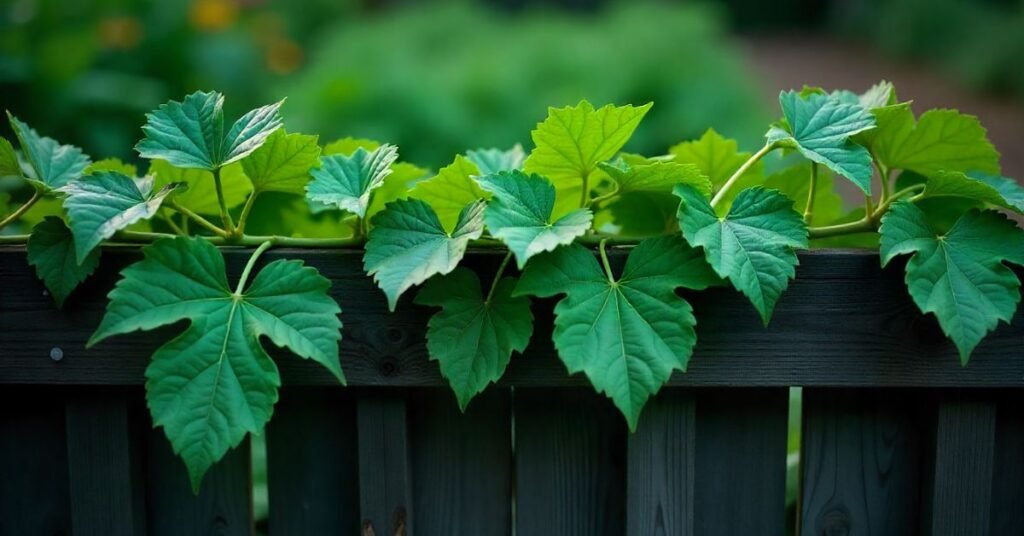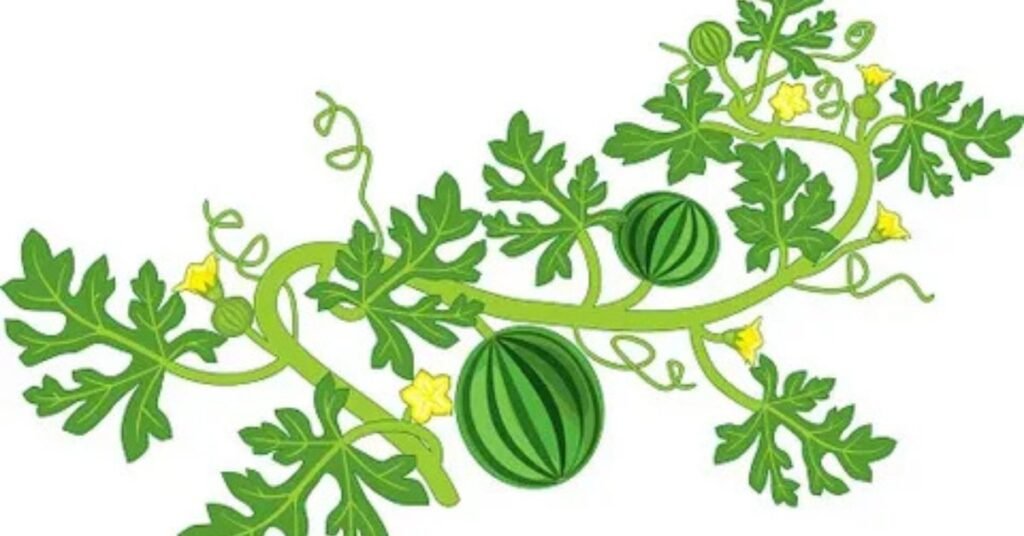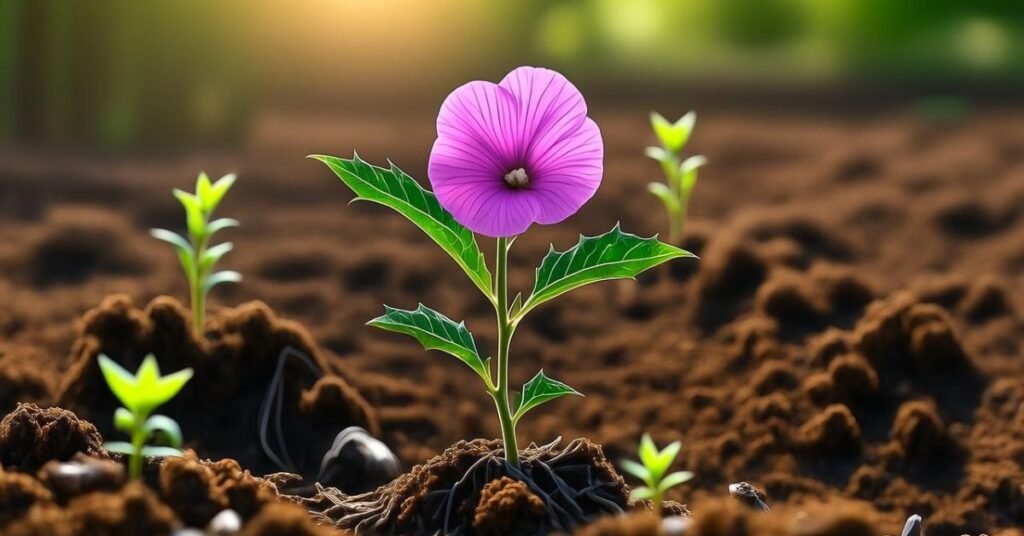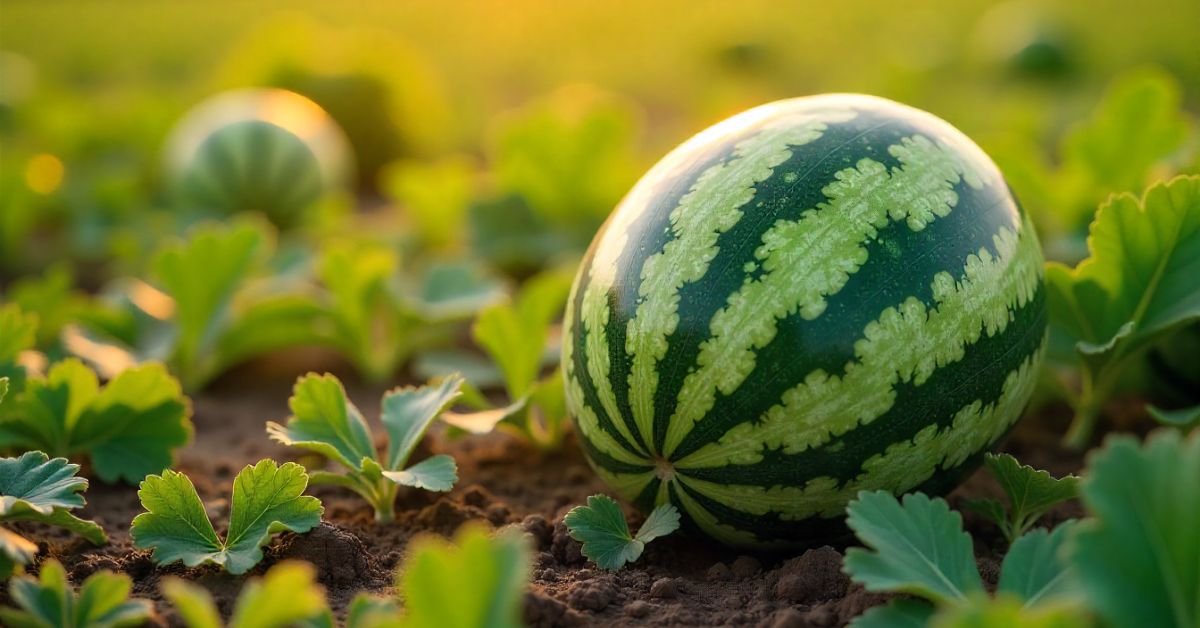Introduction
A watermelon leaves plant is known for its broad, green leaves with a unique shape. The leaves are often used in traditional remedies and home gardening. Growing steadily and with fresh, vibrant leaves is a sign of a healthy plant. It thrives in the right soil and light conditions.
Many people confuse healthy leaves with ordinary growth. But there are clear signs that show strength and freshness. The color, texture, and size of the leaves matter a lot. Once you learn these signs, it becomes easy to spot a strong and thriving plant.
A healthy watermelon leaves plant usually has bright green leaves without yellow or brown spots. The surface looks smooth and firm, not dry or wrinkled. When cared for properly, the plant stays lush and continues to grow well.
How to Grow Watermelon Peperomia
Watermelon Peperomia is a small and beautiful houseplant. It gets its name from the leaves that look like watermelon skin. The plant grows best in bright, indirect light. It does not like strong sunlight as it can burn the leaves. It is best to use well drained soil and to keep it slightly moist.

This plant is easy to grow with little care.You should only water the soil when it feels dry on top. Too much water can damage the roots. Place it in a warm spot with good airflow. With the right care, your Watermelon Peperomia will stay healthy and add beauty to your home.
Propagating Watermelon Peperomia
Propagating Watermelon Peperomia is simple and fun. You can grow new plants from leaf cuttings or stem cuttings. Cut a healthy leaf with its stem and place it in soil or water. Keep the soil slightly moist and the pot in a bright, warm place. In a few weeks, the roots will start to grow. With patience, the small cuttings will turn into fresh, healthy plants.
Light
Watermelon Peperomia grows best in bright, indirect light. Direct sunlight can burn its leaves and cause damage. An area with filtered light near a window is ideal. If the light is too low, the leaves may lose their bright color. Good light helps the plant stay healthy and grow well.
Water
Watermelon Peperomia does not need too much water. Always check the top soil before watering. If it feels dry, then water the plant. Too much water can make the roots rot. Use a small amount and let the excess drain out.
In summer, the plant may need water more often. In winter, it needs less.It is important to keep the soil moist, but not soggy. Proper watering helps the leaves stay fresh and bright.
Temperature and Humidity
Watermelon Peperomia loves warm temperatures. It grows best between 65°F and 80°F.Do not place it near a heater or in a cold draft. Sudden changes in temperature can stress the plant. Keep it in a stable and cozy spot for healthy growth.
This plant also enjoys medium to high humidity. If the air is too dry, the leaves may curl or lose shine. Plants can be misted lightly or watered with a tray.. A humid environment helps the plant stay fresh and vibrant.
| Condition | Ideal Range | Notes |
| Temperature | 65°F – 80°F (18°C – 27°C) | Avoid cold drafts and direct heat |
| Humidity | Medium to High | Mist leaves or use water tray |
| Winter Care | Keep warm and reduce water | Protect from cold air |
Fertilizer
Watermelon Peperomia needs little fertilizer to stay healthy.A balanced liquid fertilizer should be applied once a month during spring and summer. Do not overfeed, as too much can harm the roots. In fall and winter, the plant grows slowly and does not need fertilizer. Proper feeding keeps the leaves bright and the plant strong.
Potting and Repotting
Watermelon Peperomia grows well in small pots. It does not need a large container because its roots stay compact. Choose a pot with drainage holes to keep the soil from getting soggy. Fresh soil gives the plant enough nutrients to grow healthy.
Repotting is only needed every 2 to 3 years. Do it when the plant looks crowded or the roots fill the pot. Gently move it to a slightly bigger pot with fresh soil. Repotting helps the plant stay strong and continue growing well.
Why Are My Watermelon Peperomia’s Leaves Splitting?
Leaves of Watermelon Peperomia may split when the plant is stressed. Too much sunlight can burn and damage the leaves. Overwatering or underwatering can also cause splitting. Sometimes low humidity makes the leaves weak and fragile. Check the care routine and adjust light, water, and humidity. With proper care, the leaves will stay strong and healthy.
Is the Watermelon Peperomia a Succulent?
Watermelon Peperomia is not a true succulent. It has thick leaves that store some water, but it still needs regular care. Unlike succulents, it prefers more humidity and cannot handle long dry periods. In indirect light and moist soil, it grows best. So, while it looks a little like a succulent, its needs are different.
Curling Leaves
When leaves start curling, it means the plant is stressed. This can happen for many reasons.It is important to identify the cause quickly.
- Too much or too little water can make leaves curl.
- Direct sunlight may burn and curl the leaves.
- Cold or hot air can also cause stress.
- Pests like aphids can make the leaves curl.
- Lack of nutrients sometimes leads to curling.
Leaves Turning Brown
Leaves turning brown show that the plant is facing a problem. It may be related to water, light, or the environment. Finding the reason will help save the plant.

- Dry soil can make leaf edges turn brown.
- Too much direct sunlight may burn the leaves.
- Overwatering can damage roots and cause browning.
- Low humidity makes leaves dry and brown.
- Lack of nutrients may also cause brown spots.
Leaves Turning Yellow
Leaves turning yellow are a common sign of stress in plants. It can happen for different reasons. Watching your plant closely will help you find the cause.
- Overwatering can make leaves yellow.
- Poor drainage may damage roots and turn leaves yellow.
- Lack of sunlight can cause yellowing.
- Not enough nutrients may lead to pale yellow leaves.
- Pests or diseases can also be the reason.
Drooping Leaves
Drooping leaves are a sign that your plant is not happy. It usually means the plant is weak or stressed. Checking the cause will help bring it back to health.
- Too little water makes the leaves soft and droopy.
- Overwatering may lead to root rot and make the leaves droop..
- Low light levels may weaken the plant.
- Sudden changes in temperature can stress the plant.
- Pests or diseases may also lead to drooping leaves.
Common Pests & Plant Diseases
Plants often face problems from pests and diseases. These issues can make leaves weak, yellow, or damaged. Knowing the signs helps you protect your plant early.
Here is a simple table with common pests and plant diseases:
| Problem | Signs on Plant | Solution |
| Aphids | Small insects on leaves, sticky residue | Spray with soapy water or neem oil |
| Spider Mites | Tiny webs, yellow or dry leaves | Increase humidity, use miticide |
| Mealybugs | White cotton like spots on stems/leaves | Wipe with alcohol, use neem oil |
| Root Rot | Soft, black roots, drooping leaves | Improve drainage, reduce watering |
| Powdery Mildew | White powder on leaves | Trim infected parts, use fungicide |
Watermelon Peperomia Care
Watermelon Peperomia is an easy plant to care for. It grows well in bright, indirect light. The soil should be light and well drained. Water only when the top soil feels dry. Too much water can harm the roots. Keep the plant in a warm room with good airflow. Wipe the leaves gently to keep them shiny and healthy. This plant also enjoys some humidity, so misting helps it stay fresh.
Fun Facts About the Watermelon Peperomia Plant
The Watermelon Peperomia is a unique and loved houseplant. Its leaves look like watermelon skin, which makes it very popular. Here are some fun facts about this plant:
- It is not related to the watermelon fruit.
- The plant stays small and compact, perfect for tables.
- It is non toxic and safe for cats and dogs.
- The leaves can grow up to 4 inches wide.
- It is also called Peperomia argyreia.
- This plant can live for many years with good care.
Conclusion
The Watermelon Peperomia is a beautiful and easy plant to grow. Its unique leaves make it stand out in any space. With proper light, water, and care, it stays healthy and strong. This plant is also safe for pets, which makes it a great choice for homes. Growing it is simple, and it brings fresh beauty indoors.
FAQs
1. How often should I water my Watermelon Peperomia?
Water the plant only when the top layer of soil is dry.
2. Does the Watermelon Peperomia need direct sunlight?
No, it prefers bright but indirect light. Direct sun can burn the leaves.
3. Is the Watermelon Peperomia safe for pets?
Yes, it is non toxic to cats and dogs.
4. Why are my Watermelon Peperomia leaves drooping?
Drooping leaves may mean overwatering, underwatering, or low light.
5. How big does the Watermelon Peperomia grow?
It stays small, usually about 6 to 12 inches tall, making it perfect for indoor spaces.


